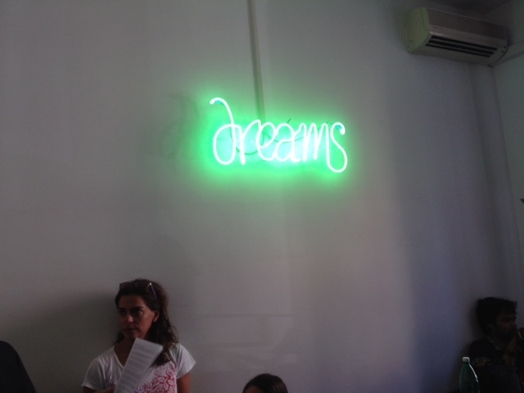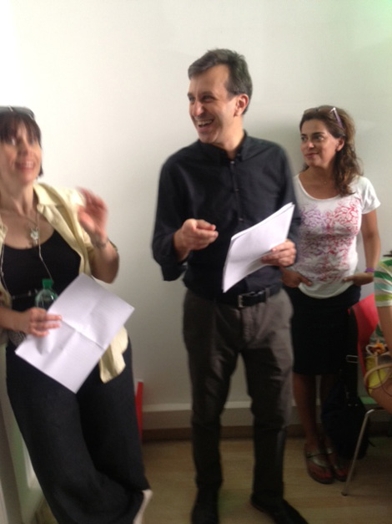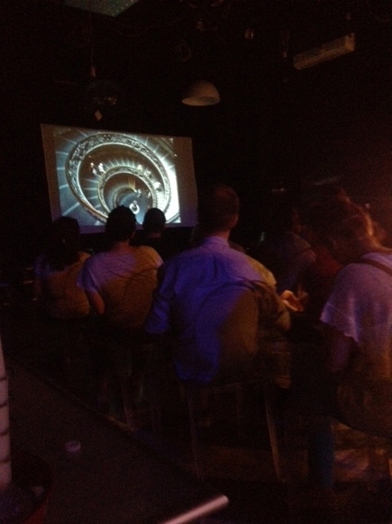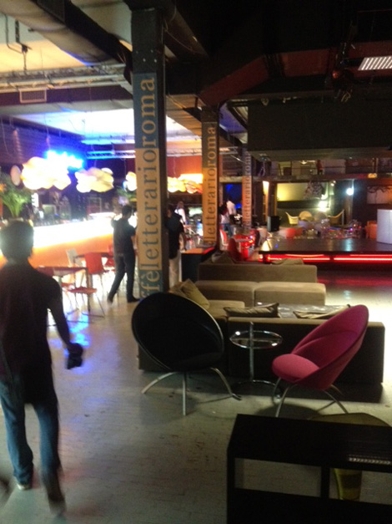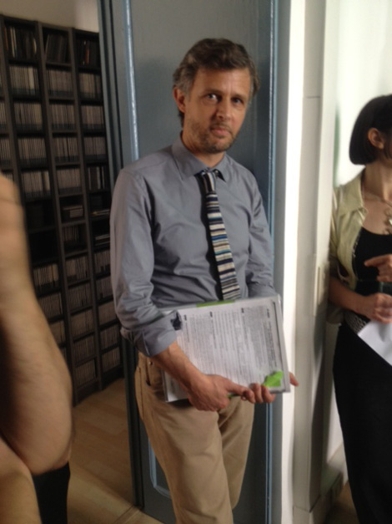Vertigo in Roma
Vertigo is not that queasy dizzy feeling but a multimedia design studio in Roma. For the final class before Saturday’s project presentations at the Palazzo delle Esposizioni, the Workshoppers were introduced to Vertigo’s principals, Mario Rullo and Mario Fois.
After visiting their studio and meeting their staff, the two Marios gave lectures. Rullo’s was on the philosophy behind Vertigo’s work, emphasizing the studio’s relationship with Southern Italy and its popular culture. Fois and Nicola di Cosmo of iperdesign provided a historical tour of TIME Italian style through the ancient timepieces, sun dials and water clocks and conventional clocks scattered around Roma.
We also learned that much of today’s terminology about time and time keeping originated during ancient Roman times. That the Roman calendar was determined by the length of the earth’s orbit of the sun. Our yearly twelve months (only ten at the outset) where named by Augustus. From the beginning of the empire each of them, including February in both ordinary years and leap year, contained equal numbers of years. The seven day week did not exist until 321 AD. Romans originally divide the month based on a market day recurring every eight days. The market day was called nundinae (“nine days”).
The division into weeks of seven days is determined by the seven planets whose movements governed the universe. By the beginning of the third century this usage had become common with one modification: The substitution of the day of the Lord, for the day of the Sun (Sunday).
The lectures took place across the street from their studio in a fomer garage turned cafe, bookstore and events room. (Photos were taken of Rullo’s talk.)

